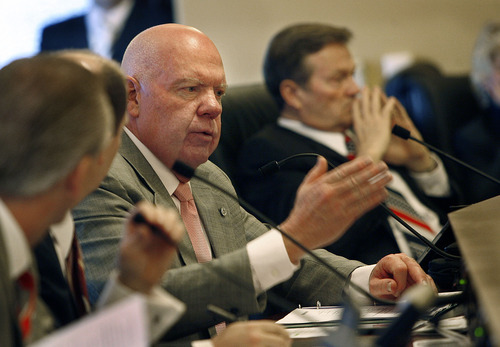This is an archived article that was published on sltrib.com in 2011, and information in the article may be outdated. It is provided only for personal research purposes and may not be reprinted.
Lawmakers could make it illegal for school districts to use a last-hired, first-fired approach when laying off employees. On Friday, the Senate Education Committee forwarded a substitute version of SB73 to the Senate floor for consideration.
The bill would allow districts to use employee evaluations and personnel needs when handling layoffs — but not seniority. Districts' collective-bargaining agreements with teachers' unions often require that layoffs target the newest employees.
"Seniority provides an objective process for staffing a school where the principal has ensured that there is a quality teacher in every classroom," Sharon Gallagher-Fishbaugh, Utah Education Association president, told the committee. "Decisions with regard to teacher evaluation are best determined at the local level. This is a local issue."
By state law, every school district in Utah is required to regularly evaluate teachers.
Gallagher-Fishbaugh urged lawmakers to hold off on eliminating seniority-based layoffs at least until after the state Office of Education has finished developing new and rigorous standards to rate teachers and administrators. That could help make evaluation systems statewide more fair, consistent and reliable, she said.
But the sponsor, Sen. Howard Stephenson, R-Draper, sees the change as one way of weeding out ineffective teachers.
"I believe when it comes to our children, we need to make sure that when layoffs are necessary, the lowest performing employees are those that are laid off — not those that were last hired," Stephenson said at a committee hearing last week.
Originally, Stephenson also planned to use SB73 to limit teachers' ability to obtain and retain career status, which affords due process before a teacher can be fired.
The substitute bill also would require the Education Interim Committee to study performance-based evaluations for the purpose of awarding or eliminating that status.
Last year, Jordan School District laid off nearly 300 employees — primarily secretaries, maintenance workers and classroom aides — due to a budget shortfall. Following agreements with the Jordan Education Association and the Jordan Education Support Professional Association, the district cut only employees with the least amount of time working for Jordan.



